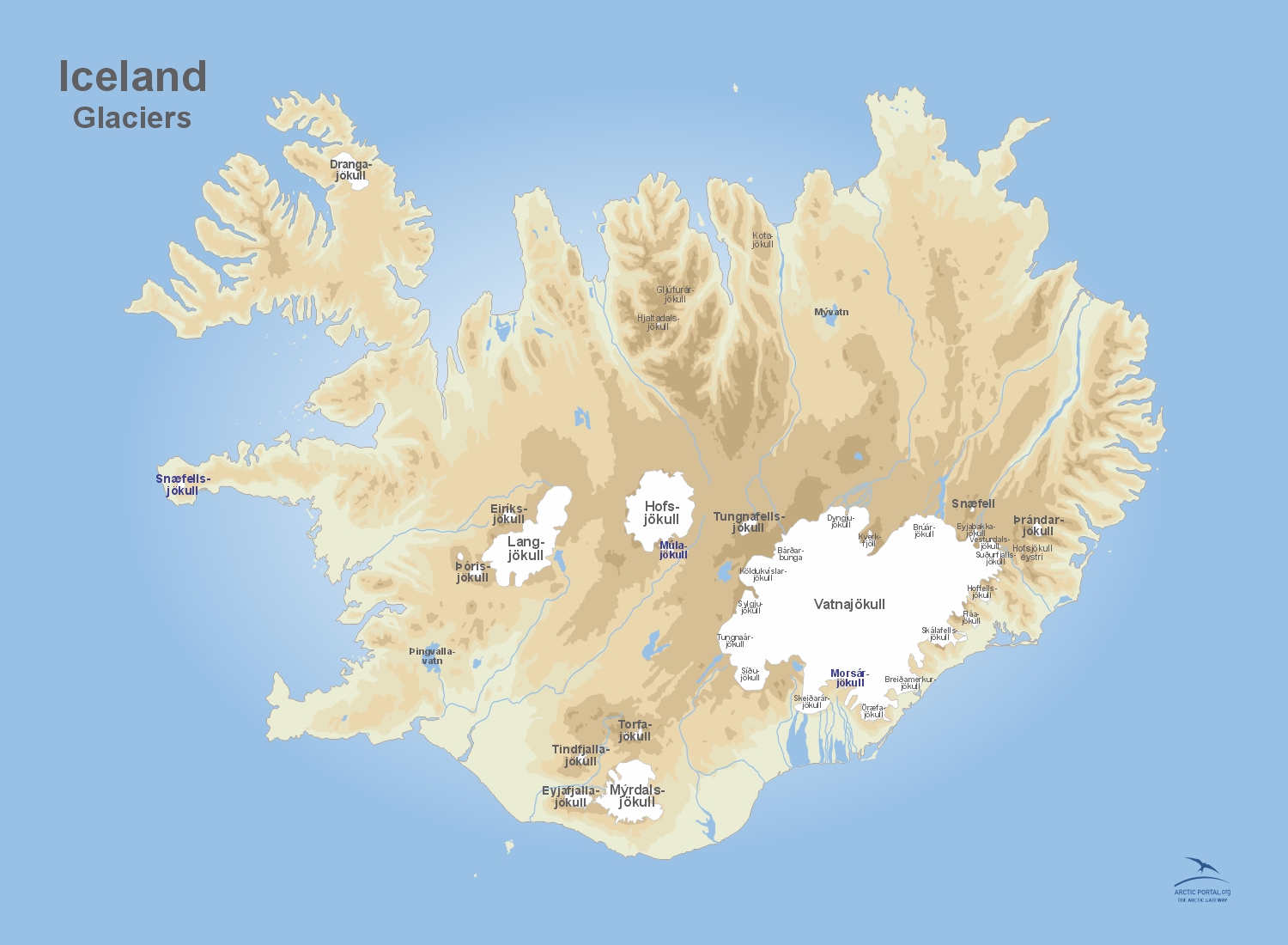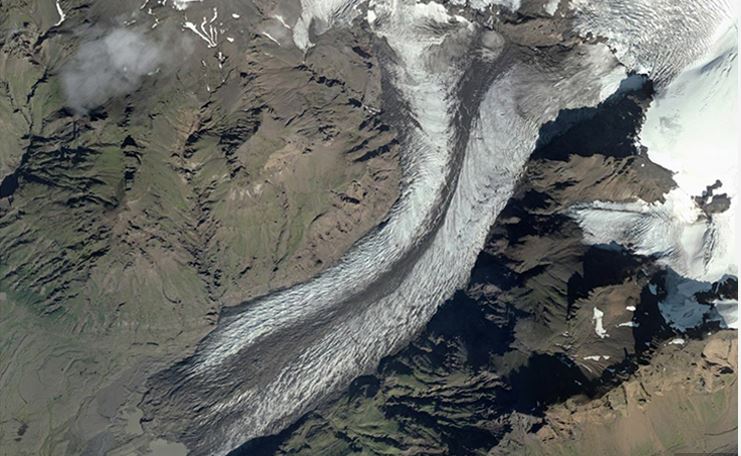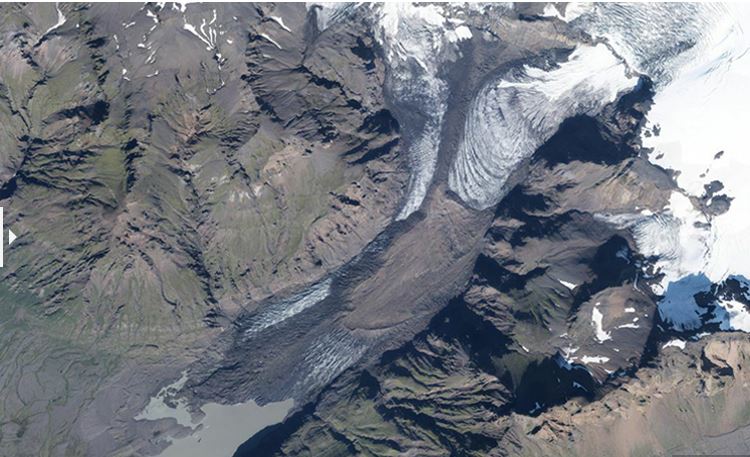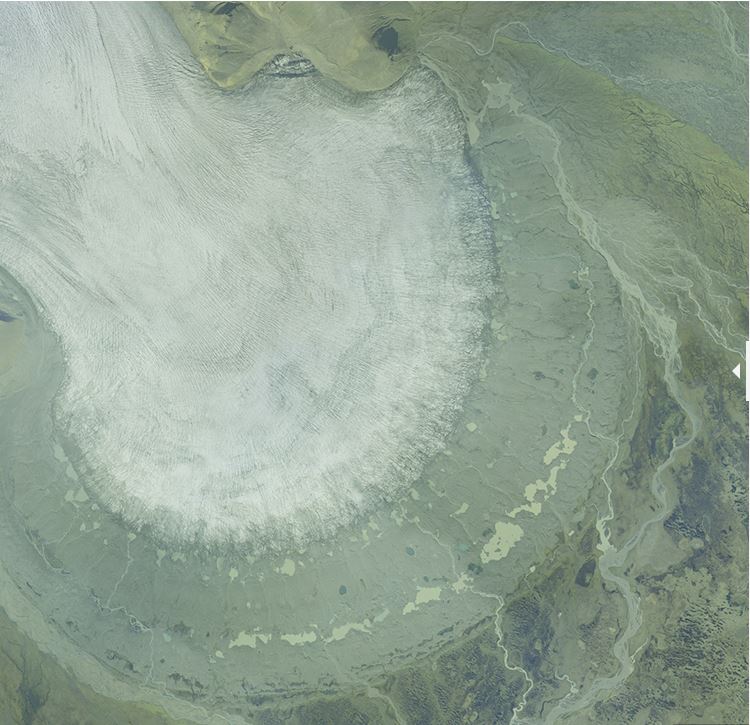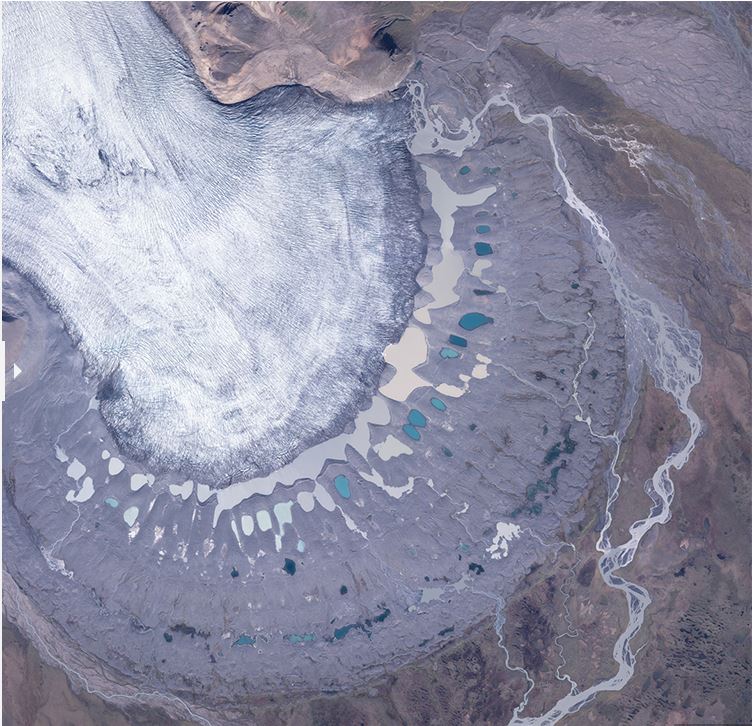The total surface area of Icelandic glaciers decreases by about 40 square kilometers annually, equivalent to the size of Lake Mývatn (see on map). Since the turn of the century, the surface area of Icelandic glaciers has shrunk by approximately 850 square kilometers, which is nearly ten times the size of Þingvallavatn (see on map). This retreat is seen as a clear sign of a warming climate. Glaciologists emphasize the importance of monitoring this situation closely and highlighting its seriousness.
About one-tenth of Iceland is covered by glaciers, which are retreating rapidly, with some even disappearing entirely. The most well-known example is a glacier called Ok which was officially declared no longer a glacier in 2019.
Since the early 2000s, about 60 small glaciers have vanished, and many more are expected to meet the same fate.
One frequently mentioned glacier that might disappear next is on the Snæfellsnes Peninsula, along with others in the vicinity of Vatnajökull.
An Icelandic company specializing in aerial photography (Loftmyndir ehf.) has been documenting Iceland's landscape for decades.
Their database includes photographs of glaciers from different periods, providing a visual record of changes over time.
Examples include glaciers within the Hofsjökull (Múlajökull) and Vatnajökull (Morsárjökull) regions, as well as Snæfellsjökull, where significant changes are evident.
One small glacier, Morsárjökull (see photos), located in a valley west of Skaftafell, shows substantial retreat over 15 years between 2003 and 2017. The glacier has moved far back into the valley, and the lagoon in front of it has expanded.
Snæfellsjökull, the 13th largest glacier in Iceland, is situated on a volcano of the same name. Over the past decades, it has thinned significantly, revealing more of the underlying landscape. Since 2002, its surface area has decreased by about 30%, now covering 8.7 square kilometers. In 1890, it was nearly 25 square kilometers, meaning it has shrunk to about one-third of its former size.
Changes in Snæfellsjökull over recent years are also apparent in aerial photos taken between 1999 and 2017. For instance, significant changes can be seen in two specific glaciers on its northern and eastern sides, which have retreated by tens of meters in recent years.
Another example is Múlajökull (see photos), a glacier extending south from Hofsjökull. Over 25 years, numerous lagoons have formed, and previously hidden riverbeds have emerged. Photos taken in 1998 and 2023 clearly show these transformations.
Glaciologists, using data and images from various sources, stress the importance of documenting these changes. The retreat of glaciers like Morsárjökull, Múlajökull, and Snæfellsjökull serves as clear evidence of the broader trend affecting nearly all glaciers in Iceland. Annual measurements at over 40 glaciers provide continuous updates on this situation.
Many large glaciers, including those in Vatnajökull, are retreating by 100 to 200 meters per year. Some glacier fronts are breaking apart, with the foremost sections detaching, as seen in examples from the past year. Since 2000, Icelandic glaciers have lost about 1,000 square kilometers, averaging over 40 square kilometers per year.
Biologists are interested in the areas exposed by retreating glaciers, studying how long it takes for life to reestablish itself in these newly revealed environments. They are mapping the progression of plant life and insect populations in these areas, which act as natural laboratories.
To slow or prevent glacier retreat, the most effective strategy is to reduce global warming. Reports from the Intergovernmental Panel on Climate Change (IPCC) highlight the unequivocal link between atmospheric warming and glacier retreat. Efforts are ongoing to raise awareness of this situation through improved access to research findings and public lectures.
A few years ago, a project called the Glacier Web Viewer (Jöklavefsjá) was launched, showcasing key measurements and numerous photographs of Icelandic glaciers, illustrating the dramatic changes over recent decades.
Source: Vísir
The tags below provide an opportunity to view previously posted related news within the selected category

